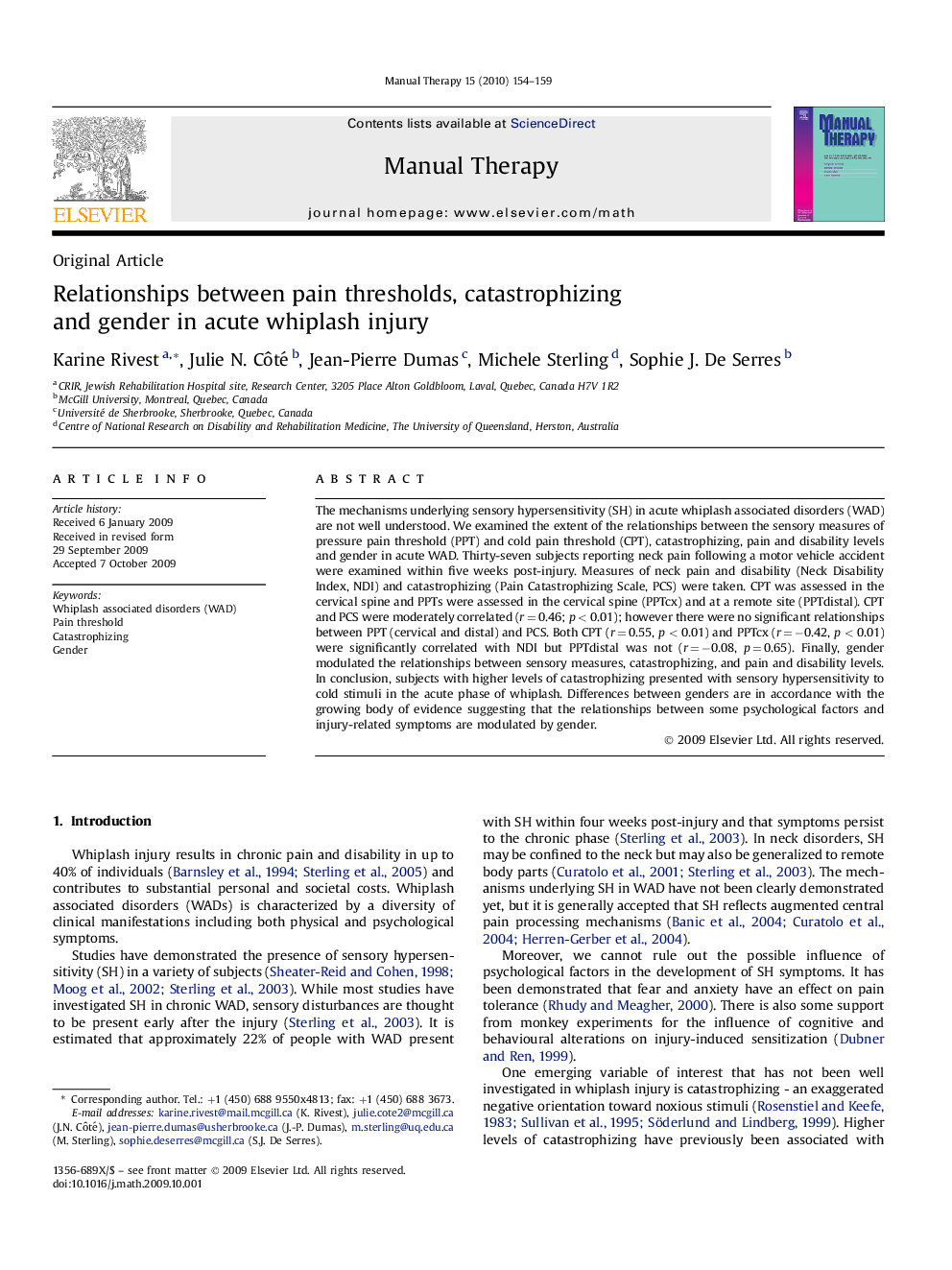| Article ID | Journal | Published Year | Pages | File Type |
|---|---|---|---|---|
| 2625708 | Manual Therapy | 2010 | 6 Pages |
The mechanisms underlying sensory hypersensitivity (SH) in acute whiplash associated disorders (WAD) are not well understood. We examined the extent of the relationships between the sensory measures of pressure pain threshold (PPT) and cold pain threshold (CPT), catastrophizing, pain and disability levels and gender in acute WAD. Thirty-seven subjects reporting neck pain following a motor vehicle accident were examined within five weeks post-injury. Measures of neck pain and disability (Neck Disability Index, NDI) and catastrophizing (Pain Catastrophizing Scale, PCS) were taken. CPT was assessed in the cervical spine and PPTs were assessed in the cervical spine (PPTcx) and at a remote site (PPTdistal). CPT and PCS were moderately correlated (r = 0.46; p < 0.01); however there were no significant relationships between PPT (cervical and distal) and PCS. Both CPT (r = 0.55, p < 0.01) and PPTcx (r = −0.42, p < 0.01) were significantly correlated with NDI but PPTdistal was not (r = −0.08, p = 0.65). Finally, gender modulated the relationships between sensory measures, catastrophizing, and pain and disability levels. In conclusion, subjects with higher levels of catastrophizing presented with sensory hypersensitivity to cold stimuli in the acute phase of whiplash. Differences between genders are in accordance with the growing body of evidence suggesting that the relationships between some psychological factors and injury-related symptoms are modulated by gender.
